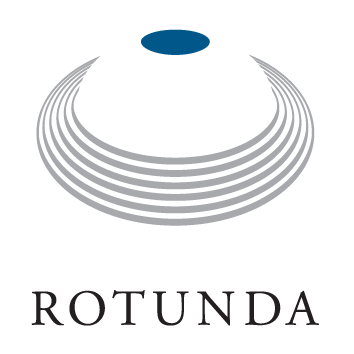Transcript
Edited by David G. Coleman and Marc J. Selverstone, with Kieran Matthews
News of a possible second attack on the U.S. destroyer Maddox had already reached Secretary of Defense Robert McNamara by the time of this conversation with President Johnson. In fact, McNamara had placed a call to Johnson at 9:12 A.M. alerting the President that the USS Maddox was once again on alert, with “unidentified surface vessels” appearing and then disappearing from the its radar screens.[note 1] See “Editorial Note,” U.S. Department of State, Foreign Relations of the United States (FRUS), 1964–1968: Vietnam 1964, ed. Edward C. Keefer and Charles S. Sampson (Washington, DC: GPO, 1992), 1:604–5.
Hello?
Secretary [Robert] McNamara is calling you again, sir. On [line] 0.
Mr. President?
Yeah.
General [Earle] Wheeler and I are sitting here together. We just received a cable from Admiral [Ulysses S. Grant] Sharp, making three recommendations with respect to our destroyer tracks and enemy action responses, and I wanted to mention them to you with a recommendation.[note 2] For documentation on both reconnaissance and rules of engagement, see “Memorandum From the Chairman of the Vietnam Coordinating Committee (Forrestal) to the Secretary of State,” 3 August 1964, ibid., 1:598–600; “Memorandum From the Deputy Assistant Secretary of Defense for International Security Affairs (Solbert) to the Secretary of Defense (McNamara),” 3 August 1964, ibid., 1:600–601. I’ve discussed this with Dean Rusk, and he and I are in agreement on the recommendation. Sharp recommends first that the track of the destroyer be shifted from 11 miles offshore to 8 miles offshore. This makes no sense to us; we would recommend against it. His purpose by shifting the track is simply to make clearer that we believe the 12-mile limit is not an effective limit on us. We think we do that adequately by sailing at 11 miles as opposed to 8. Secondly, Sharp recommends that we authorize the attack—
What reason does he give for his eight?
Simply that it more clearly indicates our refusal to accept a 12-mile restriction. We think we’ve clearly indicated our refusal to accept a 12-mile restriction with the 11-mile limit. We see no need to change the track at this time.
Why—what other objections do you have?
It changes a program that … shouldn’t be changed frequently. These orders are very precise. The tracks are laid down very clearly. They go through three command channels to get out there. This ship is allegedly to be attacked tonight.[note 3] McNamara had been informed of electronic intercepts provided by the National Security Agency indicating that North Vietnamese PT boats were preparing for an additional attack. The first of those messages were intercepted at 4:04 A.M., Washington time, on 4 August. Edwin E. Moïse, Tonkin Gulf and the Escalation of the Vietnam War (Chapel Hill: University of North Carolina Press, 1996), pp. 112–13. We don’t like to see a change in operation[al] plan of this kind at this time. And we don’t think it achieves any international purpose. So—certainly no military purpose is served by it.
All right.
Secondly, he recommends that the task force commander be authorized to pursue the attacking vessels in the event he is attacked, and destroy their bases.[note 4] The commander of Task Force 77 was Rear Admiral Robert B. Moore, aboard the aircraft carrier USS Ticonderoga. In this case, it would mean—
Wait just a minute.
[to McNamara] Go ahead, Mac.
Secondly, he recommends that the task force commander be authorized to pursue any attacker and destroy the base of the attacker. In this instance, if he were attacked by patrol boats, it would mean that he would pursue the patrol craft into the shoreline, identify the base of the patrol craft, and destroy that base. Now, this is an action that we might well wish to consider after the second attack. But I think it would be inappropriate—General Wheeler agrees and Dean Rusk agrees—inappropriate to provide the task force commander that authority. There will be ample time for us after a second attack to bring this problem to your attention. You can then decide how far you wish to pursue the attacker into his base area. [Pause.]
What objections do you have to pursuing him?
We—only the objection that, if we give such authority, you have, in a sense, lost control of the degree of our response to the North Vietnamese. You don’t know exactly what bases will be attacked, where they are in relation to population centers, how much force will be applied to attack them, when it’ll occur. I personally would recommend to you, after a second attack on our ships, that we do retaliate against the coast of North Vietnam some way or other, and we’ll be prepared—
What I was thinking about when I was eating breakfast, but I couldn’t talk it: I was thinking it looks to me like the weakness of our position is that we respond only to an action and we don’t have any of our own, but when they move on us and they shoot at us, I think we not only ought to shoot at them, but almost simultaneously pull one of these things that you’ve been doing, one of their bridges or something.
Right … exactly. I quite agree with you, Mr. President. And I’m not sure that the response ought to be as Admiral Sharp suggests.
Well, it may not—I’m not either, I’m not either. I don’t know … unless I knew what base it was and what [unclear].
Right.
But I wish we could have something that we’ve already picked out [McNamara attempts to interject], and just hit about three of them damn quick, right after.
We will have that. And I talked to Mac Bundy a moment ago and told him that I thought that was the most important subject we should consider today and be prepared to recommend to you a response, a retaliation move against North Vietnam in the event this attack takes place within the next six to nine hours. And we can have that for you—
All right, now, we better do that at lunch.[note 5] President Johnson convened a meeting of the Tuesday lunch group, which included McNamara, Rusk, Director of Central Intelligence John McCone, National Security Adviser McGeorge Bundy, and Under Secretary of Defense Cyrus Vance. The lunch lasted from 1:36 to 2:55 P.M. By then, President Johnson had learned of a second alleged attack in the Tonkin Gulf, this time on both the USS Maddox and the USS C. Turner Joy. McNamara informed Johnson of the attack at 11:06 A.M. See Conversation WH6408-04-4663. [McNamara acknowledges.] There’s some things—I don’t want to go in with these other—I want to keep this as close as I can. So let’s just try to keep it to the two or three—
I will be prepared to do so at lunch.
All right.
Now, thirdly, Sharp recommends that the task force commander be authorized to engage in hot pursuit beyond the 11-mile limit, in as far as the 3-mile limit, which we accept as the definition of territorial waters. At present, the instructions to the commander are: “Do not pursue an attacker closer to shore than 11 miles.” Sharp recommends that that 11-mile limit be shifted to 3 miles. I’ve talked to Dean about this. He agrees as far as air pursuit is concerned: “Pursue by air as close as three miles to shore. Do not pursue by sea closer than eleven miles.” His reason for differentiating sea from air is that we can always argue that the air was further out than three miles, and he’s concerned about taking the ships in as close as three miles to shore. I am willing to accept his point for a different reason, however. I don’t think ship pursuit between 11 miles and 3 miles would be effective anyhow, because our ships travel at about 27 knots and these patrol boats travel at 50 knots, and the possibility of a ship being effective in that 11- to 3-mile area is not very great. The air power is likely the most effective power, anyhow. And I would therefore recommend that we accept Sharp’s recommendation, but limit it to air.
All right. OK.
All right. Fine. Thank you, sir.
Cite as
“Lyndon Johnson and Robert McNamara on 4 August 1964,” Conversation WH6408-04-4658, Presidential Recordings Digital Edition [Lyndon B. Johnson: Civil Rights, Vietnam, and the War on Poverty, ed. David G. Coleman, Kent B. Germany, Guian A. McKee, and Marc J. Selverstone] (Charlottesville: University of Virginia Press, 2014–). URL: http://prde.upress.virginia.edu/conversations/4002543




